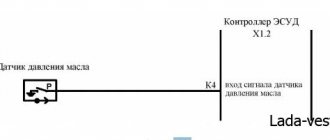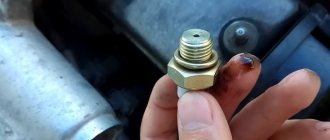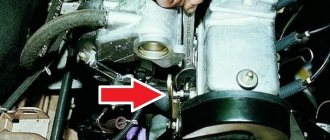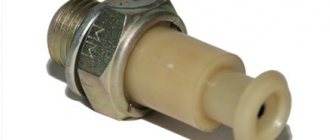Modern power plants are equipped with electronic control units that allow you to monitor the operation of all systems and receive timely information about their incorrect operation. One of the devices is an absolute pressure sensor, abbreviated as DBP. It helps ensure stable operation of the power unit, and transmits the collected data to the ECU.
In many car models equipped with a similar device, it is not difficult to find - the pressure sensor is located in the intake manifold of the engine. Here he is responsible for obtaining information about pressure changes in the intake tract. Electronics, based on the data received from it, optimizes the composition of the combustible mixture, which is sent to the combustion chamber.
Why is DBP required?
The correct operation of a small device affects the composition of the combustible mixture supplied to the pressure chamber. The absolute pressure sensor relies on the vacuum state during measurement, setting it as an absolute value. This is the basic principle of its operation.
When the information enters the electronic control unit, the optimal air density and flow rate are calculated, and after that the fuel-air mixture is prepared. The ECU transmits certain commands, based on the mass of required air obtained during the calculation, and the injectors responsible for fuel injection are adjusted.
Absolute pressure sensors have become a replacement for the flow meter, however, in some vehicle models both devices may be present at once.
Repair
What should be done in case of minor malfunctions of the absolute pressure sensor? It should be said that minor repair work is within the capabilities of the average car owner. If the sensor has serious faults, then there are no other options other than completely replacing it. But replacing the device is within the capabilities of the car owner himself. To do this, you need to know where the sensor is located. It is necessary to disconnect the hose between the manifold and the sensor, disconnect the set of wires and remove the fasteners in the form of bolts. Next, you need to replace the sensor with a new one, performing all the operations in reverse.
If minor defects are present, the following operations are permissible:
- First of all, as described above, the sensor is removed. After removing the outer casing, you need to look for visible signs of malfunction.
- If dirt, rust, etc. are present, they should be cleaned. Next you need to check the electrical contacts. After all manipulations, you need to dry the device.
- After all cleaning procedures, it is recommended to use silicone sealant in the fastening areas and longer drying in warm conditions.
- Only after 24 hours is it possible to assemble the sensor parts. During assembly, special attention should be paid to the tightness of the fastening.
After all the manipulations, you should immediately check the functionality of the sensor. Start the car, if the start went without any incidents, then we can assume that the minor repairs were successful. Otherwise, you can be sure that there is a serious malfunction of the sensor, and the problem should be resolved by contacting specialists.
If you have any questions, leave them in the comments below the article. We or our visitors will be happy to answer them
How does DBP work?
By receiving readings from the absolute pressure sensor, the electronics control the volume of air mass entering through the throttle valve. This indicator is needed to generate a certain impulse command, allowing the amount of fuel to be calculated.
The device is a vacuum chamber from which air has been completely removed. The pressure readings in the inlet fitting are correlated with the level in this chamber, the readings are compared and the difference determines the outgoing command.
In this case, a number of manipulations are performed:
- The diaphragm of the device, characterized by a high degree of sensitivity, is deformed due to the pressure of the intake manifold influencing it;
- deformation is responsible for fluctuations in the resistance of surface position strain gauges. This effect is called “piezoresistive”;
- proportional to changes in resistance, the voltage also fluctuates, the output lies in the range from one to 5 V;
- the incoming voltage helps to form a command-pulse, which is transmitted to the injectors. This is how the pressure at the intake valve is determined, it is proportional to the voltage.
As a result, the power plant receives a certain dose of the fuel-air mixture.
Replacing the absolute pressure sensor
Replacing the absolute air pressure sensor
There are practically no difficulties with replacement. To do this, simply remove the flexible hose connecting the device to the inlet manifold. Disconnect the wiring harness block and unscrew the mounting bolts. After all of the above, the defective device is removed and a new one is installed. When installing, the operations are performed in reverse order. It is worth noting that understanding what an absolute air pressure sensor is, what its functions and operating principle are, will allow you to understand the processes occurring under the hood of a car. This will make it possible to make the right decisions in a timely manner and increase the safety and quality of movement.
Instrument location
Having figured out what DBP is, you need to determine where to look for it in the car. This type of device is used only on cars that are equipped with injection engines, especially if they also have a compressor and turbocharging system.
Often the device is located on the intake manifold; in addition, there are models where it is attached directly to the body in the engine compartment, and the inlet manifold and fitting are connected with a flexible hose.
Even if the car does not have a mass air flow sensor, DBP can be installed and perform the tasks assigned to it.
Operating principle and design of the device
The design of the device includes two chambers - vacuum and atmospheric. It is clear that the first chamber contains a vacuum, and the second chamber is directly connected to the intake manifold. In addition, the device body contains four strain gauges, which are attached to the diaphragm, and a silicon chip. Pressure acts on the diaphragm, and under its action it moves the sensitive elements, changing their resistance, as a result of which the silicon chip supplies a pulse of a certain value to the ECU. The strain gauges are connected in a bridge circuit to increase the impulse, and the voltage across the sensor can vary from one to five volts.
It is on the basis of the received voltage that the electronic control unit draws a conclusion about the pressure in the intake manifold. Higher pressure means higher voltage and vice versa. Depending on the design of the sensor, it can supply both an analog and digital signal, but for this it is necessary to integrate a special analog-to-digital signal converter circuit into the sensor body.
Sensor malfunction: what indicates a breakdown
Correct functioning of the device affects vehicle control and comfortable driving. Signs of a sensor malfunction include the following symptoms:
- increase in fuel consumption. Incorrect pressure data received by the electronic control unit forces a more saturated fuel mixture to be supplied, which affects fuel consumption;
- in the hot season, the exhaust is whitish;
- the dynamics of the power unit deteriorate, warming up does not improve the situation in any way;
- the exhaust smells noticeably of gasoline;
- idle speed does not decrease for a significant time;
- noises arise, the engine hums;
- gear shifting is accompanied by jerks.
Such unpleasant phenomena most often indicate a malfunction of the sensor. In this case, diagnostics is needed.
Signs of trouble
In the event of a DBP failure, the motor will continue to operate, calculating air flow and load indirectly, for example, according to the readings of the throttle position sensor. But at the same time, engine performance will deteriorate:
- idle speed will increase;
- an error signal will be displayed;
- power will decrease and consumption will increase;
- the engine will run unstably;
- starting will be difficult.
This situation will be especially noticeable in mountainous areas, since one of the functions of the DBP is to monitor atmospheric pressure, and the vacuum is calculated from it.
Diagnostic measures
How to check the absolute pressure sensor and determine that it is working:
- first, connect an adapter for a pressure gauge to the vacuum hose connecting the device and the inlet manifold;
- The power unit is allowed to idle for some time. If there is a vacuum in the manifold - readings below 529 mm, you need to make sure that there is no damage to the hose, there are no defects in the sensor diaphragm;
- Having received the data from the pressure gauge, it is disconnected and a vacuum pump is installed in its place. A rarefied state is created (55–56 mm), after which pumping stops. If the state is held for about thirty seconds, then the sensor is working properly, and the problems with the car lie in something else. Otherwise, the faulty device must be replaced.
If the device is digital, diagnostics occurs somewhat differently:
- the tester is switched to voltmeter mode, a wire installed on the output contact of the device being diagnosed is connected to it;
- the power plant starts. If the voltage is maintained at 2.5 V, then the sensor is working, but if it deviates to one side or the other, it requires replacement;
- in tachometer mode and with the vacuum hose disconnected, the positive probe is connected to the signal terminal, and the negative probe is connected to ground. If the cause of the malfunction is not in the DBP, then the tachometer will show a value of 4400–4900 rpm;
- After connecting the vacuum pump, you can determine whether there are changes in the readings obtained by the tachometer. If they are, then you should consider replacing them.
Diagnostic measures indicate whether it is worth preparing for a complete replacement or whether cleaning the sensor is sufficient.
Verification methods
Checking the sensor is quite simple, for example, by replacing it with a known good one. You should start by monitoring the condition of the wiring to the ECU, the supply voltage and the reliability of the mass contact. There are also instrument tests with devices of varying complexity.
OBD2 scanner
Using a scanner, you can read readings directly from the ECU memory. This is the most complete check, especially if it is carried out in different engine operating modes.
This is interesting: How to use the diagnostic system adapter
You can simply read the DBP output signal with the engine off, this is a high voltage, about 4 V, and also at idle, it should drop below 1 V.
Between these values, the readings change with throttle changes and stable speeds, according to changes in vacuum and an increase in pumping consumption of the motor.
Multimeter
The signal level at the sensor contact can also be measured with a conventional voltmeter as part of a multimeter:
- check the supply voltage with the ignition on;
- measure the output signal with the engine off, it should be at the upper limit;
- creating a vacuum using a special pump or just a syringe, extending its rod, monitor the change in the voltmeter readings, they should decrease, down to 0.9-1 V;
- when moving the syringe rod to compression, note that the voltmeter readings will become higher than in the neutral position, DBP reacts to pressure above atmospheric;
- If the voltage is too low at neutral pressure, 3.5 V or lower, the sensor will not work satisfactorily and the motor performance will decrease.
The DBP cannot be repaired, but with some exceptions it is a fairly inexpensive device, and replacing it with a new one, with better characteristics relative to the worn one, will quickly pay for itself due to fuel savings.
When replacing, you need to pay attention to the presence of oil in the intake manifold; it is this that most often “poisons” the device, leading to incorrect readings. It gets there through the crankcase ventilation or from the gas reducer.
How to clean DBP
During operation, the device gradually becomes overgrown with dirt, which reduces the sensitivity of the diaphragm. Because of this, symptoms may be observed that indicate a malfunction of the DBP. To clean it from contaminants, it is necessary to dismantle it.
Depending on the model of the car, the location of the sensor changes. If the engine is turbocharged, then there may be two of them, one of which will be located on the turbine, and the second on the intake manifold. In any case, bolts will be used for fastening - one or two, depending on the design.
To clean the sensor, you should stock up on carb cleaners or similar cleaning products. First, the housing is tidied up, and then the contacts are carefully cleaned. The most attention is paid to the O-ring and diaphragm. You need to be careful with them, the main thing is to prevent damage. It is enough to spray a certain amount of cleaning composition and then pour it out with the dirt removed.
Cleaning allows you to restore sensitivity to the sensors, and if the problem was only contamination, diagnostics will show that the sensor is in perfect order, and the engine will operate in standard mode. If the manipulations do not help, you should purchase a new replacement device.
What to look for in a faulty MAP sensor?
A faulty MAP will affect the air/fuel ratio of the engine. If the composition of the mixture is not correct, then detonation combustion is possible. If detonation continues for a long time, the internal parts of the engine (such as pistons, rings) will be damaged, and this will ultimately lead to catastrophic failure. Please pay attention to these warning events:
- Rich composition: rough idling, excessive fuel consumption, black smoke, poor acceleration and a strong smell of unburned fuel (especially at idle);
- Poor composition: operation in waves, stalling, lack of power, weak acceleration, “sneezing” reverse emissions to the intake, overheating of the converter;
- Detonation and misfire;
- Malfunction lamps in the engine control system (Check Engine).
Repairing an engine is a lot more hassle than replacing a sensor, so if your engine has any of the above symptoms, have your MAP sensor diagnosed.
Where can I buy
Spare parts and other products for the car are easily available for purchase at auto stores in your city. But there is another option that has recently received significant improvements. You no longer need to wait a long time for a parcel from China: the AliExpress online store now offers the opportunity to ship from transshipment warehouses located in various countries. For example, when ordering, you can specify the “Delivery from the Russian Federation” option.
Follow the links and choose:
| Intake air pressure sensor 4Bar for Renault, Peugeot, KIA, Hyundai, Citroen | GKFLY car jump starter, external battery | Car charger, 2 USB ports, 5 V, 3.1 A |
| EANOP HUD car display, windshield projector | Baseus car humidifier | Car automatic parking sensors with 4 sensors |
What is a mass air flow sensor, why is it important and how to diagnose its malfunction
What is DMRV
Modern engines use two types of power supply systems: with distributed injection, the nozzle supplies fuel to the intake pipe, with direct injection, it supplies fuel to the combustion chamber. For both systems, the correct operation of the mass air flow sensor, which was once mechanical (vane type), but is now devoid of moving mechanical parts and made hot-wire (from “anemo” - wind), is important.
Factory air flow sensor made in Germany for a VAZ engine
The mass air flow sensor can be installed not only on a gasoline engine, but also on a diesel engine, where the operation of the EGR valve (exhaust gas recirculation system) is “tied” to it.
As old-school drivers used to say, an internal combustion engine does not work in two cases: there is nothing to burn or there is nothing to set it on fire. The mass air flow sensor precisely informs the electronic control unit about the amount of incoming air, the oxygen of which becomes the “fuel” for the working mixture. Having received such a signal, the ECU can ensure the most complete combustion possible. The device, located in the intake tract, consists of two resistors, which can be designed in various designs. In the first case, the resistor is exposed to passing air: when the flow intensity changes, it cools and its internal resistance changes. In the second case, it is not blown - based on the difference in readings from two resistors, the volume of air that needs to be supplied to the cylinders is calculated.
The sensor is supplied to the aftermarket with protective caps to prevent contamination during transportation.
This is what the sensor looks like on a regular VAZ engine. It will not be possible to remove it from the case without a special key.
The removed sensor is in its “bare” state. The sensitive element is clearly visible
Based on the data on the mass and temperature of the incoming air, the ECU determines its density, and also calculates the duration of opening of the injectors and the amount of fuel supplied to the combustion chamber. In general, the mass air flow sensor is important for achieving maximum engine power, for more complete combustion (environmentally friendly), and for economical driving. The failure of this sensor, like most others, causes the Check Engine warning light to go off.
The check engine light can come on for any reason. If there is no on-board computer with a diagnostic function, you will have to go to a service station where there is a scanner
However, the owner does not always associate the triggered “check” with the mass air flow sensor - especially if the engine runs without any interruptions, and the dynamic characteristics of the car have not deteriorated at all. Therefore, it is important not to leave the illuminated engine malfunction indicator unattended, but to consider errors with the diagnostic computer.
MAF or DBP?
The absolute pressure sensor (MAP), together with the temperature sensor (DTS), also controls how much air enters the intake manifold. Based on these readings, the controller generates a pulse command to the injectors. An important difference between DBP and MAF is the absence of air in the housing, since this sensor works based on measuring the difference in inlet pressure and pressure in the vacuum chamber. A design feature of the DBP is a highly sensitive diaphragm, which expands under the influence of pressure in the intake manifold. This process affects the resistance of the strain gauges, as a result of which the voltage changes.
The absolute pressure sensor (pictured) and the mass air flow sensor operate on different principles
DBP is much cheaper than a mass air flow sensor, but its operating algorithm is less advanced. And in general, not all control units can work correctly with DBP. Moreover, when switching to an absolute pressure sensor, the engine may respond to opening the throttle with a much greater delay than with the original mass air flow sensor. And, of course, simply replacing the mass air flow sensor with a DBP without serious modifications will not work due to the difference in their design and even location.
There are engines where there is no choice between DBP and MAF, because both of these sensors are present on the engine at once!
Usually, thoughts about installing a DBP instead of a standard mass air flow sensor appear when the latter fails, as well as during engine tuning - especially if the aspirated system is converted to turbocharging. However, some owners deliberately refuse the mass air flow sensor because of its high cost and not the greatest resource. Indeed, in an unfortunate combination of circumstances, the sensor can fail after 60-70 thousand kilometers, and by the figure of 120-130 thousand on the odometer of many budget cars, it is almost guaranteed to “die”.
But those who don’t bother with engine modifications usually drive with a standard mass air flow sensor, rather than replacing it with a DBP+DTV (air temperature sensor) combination. Moreover, not all engine control units work better with an absolute pressure sensor than with the original mass air flow sensor. It is difficult to answer unequivocally which sensor is more advanced in design, especially if we are talking about an attempt to replace one (and often already faulty) flow meter with another. After all, history knows many examples when happy owners clocked up several hundred thousand kilometers both on an engine with a native flow meter and on an engine with an absolute pressure sensor, especially if the latter was standardly installed at the factory.
Is it possible to do without it?
Failure of the mass air flow sensor causes the check to be triggered, but the engine will continue to operate. True, depending on the newness of the ECU firmware, the “emergency” program, without seeing a signal, can raise the idle speed to approximately 1,500 rpm. On relatively new software versions, a sensor malfunction only leads to an increase in fuel consumption or a drop in dynamics. In any case, an error in the mass air flow sensor is an important reason to check it, at least by measuring the voltage.
If the mass air flow sensor does not operate correctly, the electronics may begin to over-enrich the working mixture.
The malfunction should not be ignored, since even on relatively simple cars (the front-wheel drive Lada line of the first generations), failure of the mass air flow sensor threatens a noticeable excess consumption of gasoline or a weakening of the engine’s output characteristics. That is why the answer to the popular question “Is it possible to do without a mass air flow sensor if it is included in the design of the car?” is unambiguous and sounds like this: no, you can’t.
How to diagnose a malfunction?
In addition to the indirect signs that we mentioned above, there is a completely objective parameter that indicates the condition of the sensor and its resource - this is the operating voltage when the ignition is on. Let's study it using the example of the VAZ sensor as one of the most common.
Connection diagram for mass air flow sensor on a VAZ engine
By connecting the multimeter in DC voltage measurement mode and turning on the ignition, you can take readings of the mass air flow sensor output voltage. For a new or “reference” part it is 0.996 V.
This voltage indicates that the sensor is working like new.
One of the options for measuring voltage is directly through the sensor connection connector
Then the parameters are evaluated as follows:
1.010-1.019 V - good condition, you don’t need to think about replacing yet 1.020-1.029 V - the sensor is operational, this is about half of the remaining life 1.030-1.039 V - still in good condition, but its life is coming to an end 1.040-1.049 V - mass air flow sensor is on the verge of breaking down building, will soon require replacement 1,050 V and above - the flow meter requires immediate replacement
With a parameter of 1.016 V (first photo), the sensor is in good condition, but 1.035 V is already a reason to think about buying a new one
The sensor produces this parameter on the verge of serviceability, but you need to make sure that the data corresponds to reality and is not related to the error of the multimeter
It should be taken into account that many testers overestimate readings, so there is a risk of “sentencing” a completely serviceable sensor. In addition, its parameters largely depend on the purity of the “mass” in the circuit.
Poor crimping of wires or a rotten “braid” can affect the correct operation of both the mass flow sensor and the DBP, which is especially typical for engines of old cars.
It is best to first install a known-good “used” one before purchasing a sensor that is not the cheapest, borrowing it for testing for a while from a work colleague, a neighbor in the parking lot, a friend from a forum with the same car, etc. You should also trust the readings of a diagnostic scanner connected to the OBD-2 connector more than a cheap multimeter.
To rinse or not?
Many mechanics with many years of experience and ordinary car owners are confident that a “tired” mass air flow sensor can be revived by simply washing it - that is, remove it from the body and thoroughly “spill” it with some “carb cleaner” or alcohol in about the same way as 20-30 years ago they did this with carburetor jets. In fact, there are specialized sensor cleaning compounds that have nothing in common with the deposit solvents used to flush carburetors. Therefore, the price of such “narrowly sharpened” air flow sensor cleaners is completely different - and, as one can easily assume, higher. In addition, the manufacturers of such liquids directly indicate that they will not do miracles and will not turn a “half-dead” sensor into a completely new one, but are intended for preventive flushing of working mass air flow sensors - to remove contaminants associated with dust and oil mist that has entered the intake tract from the ventilation system crankcase
Please note: for flushing, a specialized composition is used specifically for cleaning the air flow sensor, and not a universal carburetor or fuel system cleaner
Practical experience in using such “miracle remedies” shows that they can indeed slightly reduce the readings of a still working sensor, but for those that go beyond 1.05 V, such manipulations will be like a poultice for the dead...
The main thing is not to damage the removed sensor, which is afraid even of dust, not to mention mechanical impact.
Many drivers, due to inexperience, themselves destroy still living sensors when washing. Sensitive elements should not be touched with hands or wiped with a rag, and strong pressure of liquid will do nothing but harm. Therefore, cleaning the mass flow sensor in a garage should be treated with great caution and remember: if the sensor has already “died”, then this is harmless and will no longer help it, but even if it is still in good working order, this procedure may not bring a noticeable result.
Survey
Have you ever experienced a failure of the DRMV?
Your voice
Total votes:
MEASUREMENT RANGES
| Range | Model "EMIS - BAR" |
| 0…25 kPa | 133 |
| 0…500 kPa | 133 |
| 0…3 MPa | 133 |
| 0…10 MPa | 133 |
| 0…25 kPa | 123, 175, 176 |
| 0…130 kPa | 123, 175, 176 |
| 0…500 kPa | 123, 175, 176 |
| 0…3 MPa | 123, 175, 176 |
| 0…16 MPa | 123, 175, 176 |
| 0…40 MPa | 123, 175, 176 |











